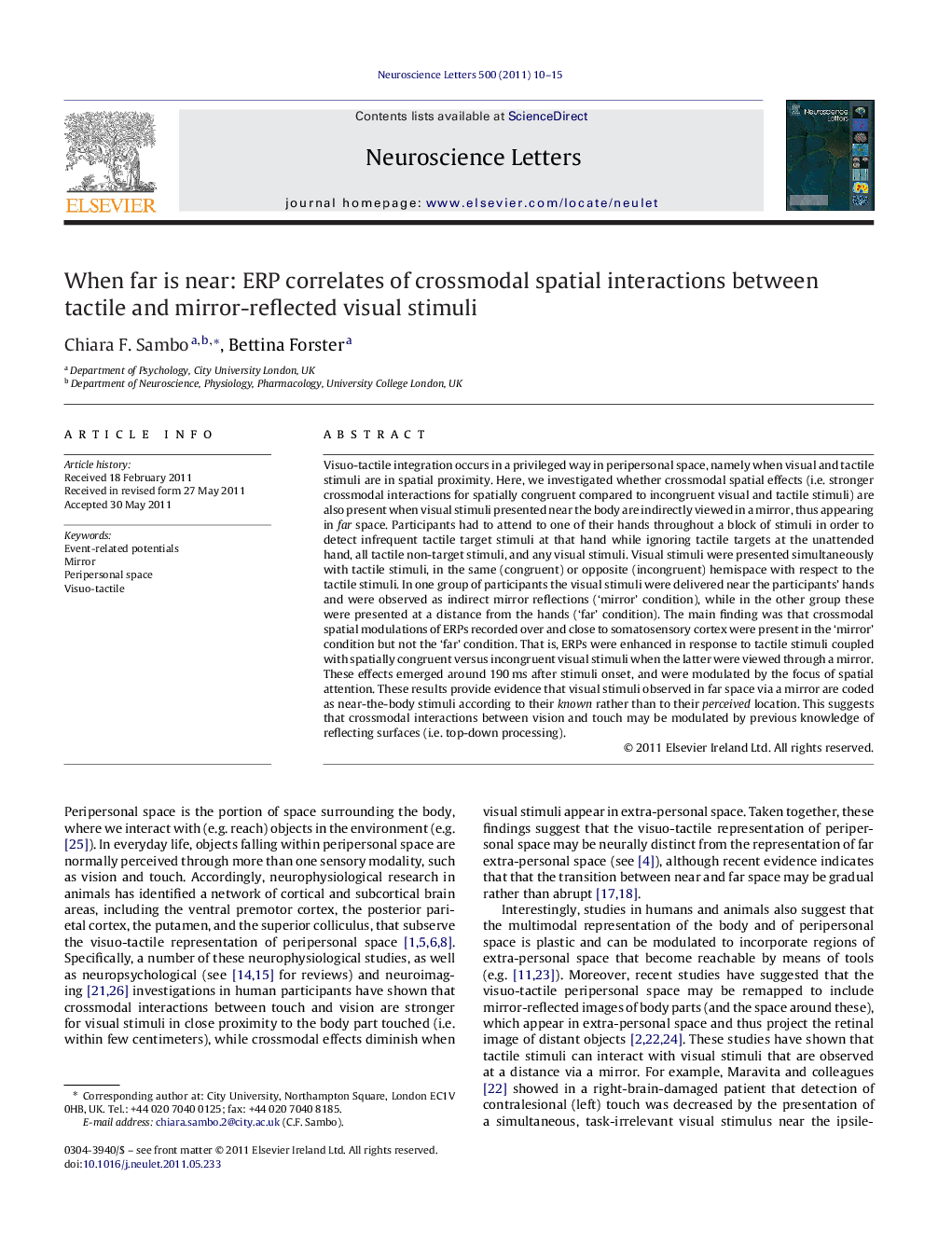| کد مقاله | کد نشریه | سال انتشار | مقاله انگلیسی | نسخه تمام متن |
|---|---|---|---|---|
| 4344936 | 1296697 | 2011 | 6 صفحه PDF | دانلود رایگان |

Visuo-tactile integration occurs in a privileged way in peripersonal space, namely when visual and tactile stimuli are in spatial proximity. Here, we investigated whether crossmodal spatial effects (i.e. stronger crossmodal interactions for spatially congruent compared to incongruent visual and tactile stimuli) are also present when visual stimuli presented near the body are indirectly viewed in a mirror, thus appearing in far space. Participants had to attend to one of their hands throughout a block of stimuli in order to detect infrequent tactile target stimuli at that hand while ignoring tactile targets at the unattended hand, all tactile non-target stimuli, and any visual stimuli. Visual stimuli were presented simultaneously with tactile stimuli, in the same (congruent) or opposite (incongruent) hemispace with respect to the tactile stimuli. In one group of participants the visual stimuli were delivered near the participants’ hands and were observed as indirect mirror reflections (‘mirror’ condition), while in the other group these were presented at a distance from the hands (‘far’ condition). The main finding was that crossmodal spatial modulations of ERPs recorded over and close to somatosensory cortex were present in the ‘mirror’ condition but not the ‘far’ condition. That is, ERPs were enhanced in response to tactile stimuli coupled with spatially congruent versus incongruent visual stimuli when the latter were viewed through a mirror. These effects emerged around 190 ms after stimuli onset, and were modulated by the focus of spatial attention. These results provide evidence that visual stimuli observed in far space via a mirror are coded as near-the-body stimuli according to their known rather than to their perceived location. This suggests that crossmodal interactions between vision and touch may be modulated by previous knowledge of reflecting surfaces (i.e. top-down processing).
► Visual and tactile stimuli are better integrated by the brain when they are spatially congruent.
► Such spatial congruence effect occurs when visual stimuli appear in near but not in far space.
► This effect is also present when visual stimuli are viewed through a mirror, appearing in far space.
► We conclude that visual stimuli reflected in a mirror may be remapped as close to the body.
Journal: Neuroscience Letters - Volume 500, Issue 1, 1 August 2011, Pages 10–15